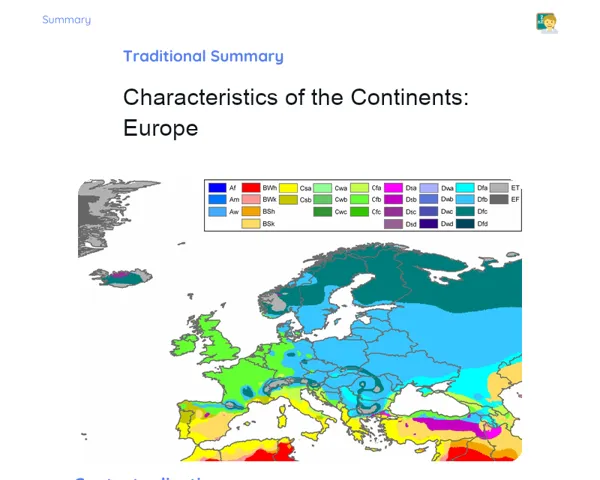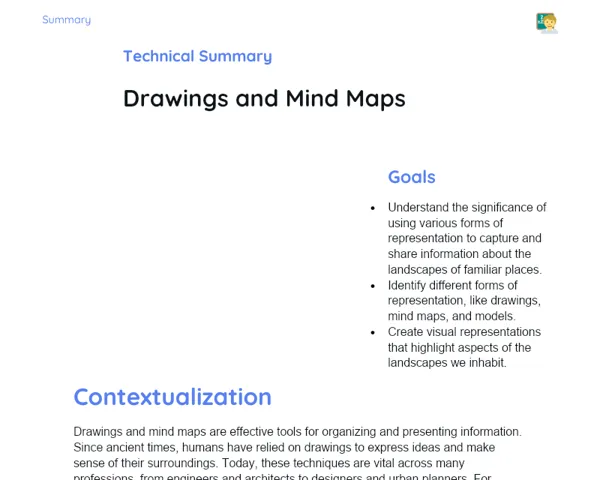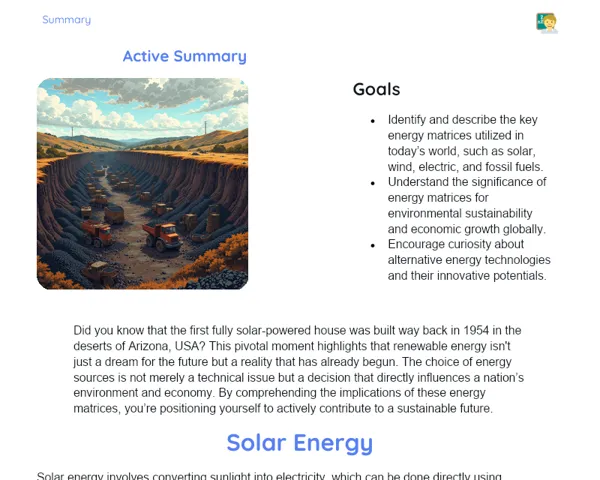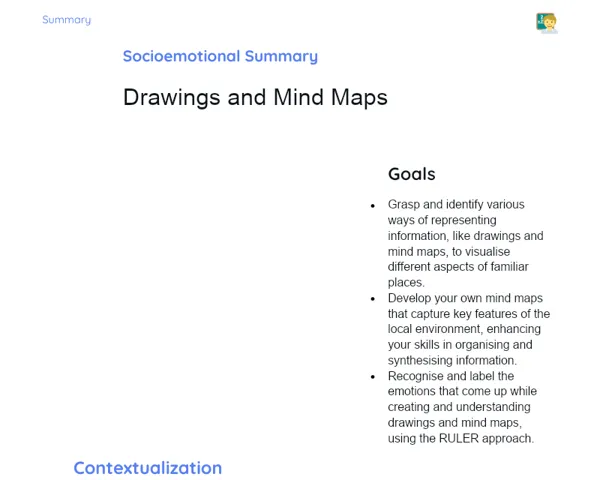Socioemotional Summary Conclusion
Goals
1. Recognise and describe various landforms like mountains, plateaus, depressions, and plains.
2. Understand the features and formation processes unique to each type of landform.
3. Connect the study of geomorphology to developing socio-emotional skills such as self-awareness, teamwork, and emotional balance.
Contextualization
Ever wondered how the mighty mountains, sprawling plateaus, intriguing depressions, and endless plains came into being? Much like each landform has its own tale, our emotions too evolve over time. Let's delve into the mysteries of the Earth and discover insights about our own inner landscape through the lens of Geomorphology.
Exercising Your Knowledge
Mountains
Mountains are nature's towering marvels, created primarily by the movement of the Earth’s tectonic plates. This movement results in folds and faults in the crust that give rise to these elevated regions. Beyond their striking beauty, mountains remind us of resilience and steadfastness. They stand firm in the face of immense challenges, much like how we strive to overcome our own hurdles in life.
-
Formation: Mountains are born out of the slow but powerful collision of tectonic plates—a process that teaches us the value of patience and perseverance.
-
Examples: Ranges like the Himalayas, Western Ghats, and the Aravallis illustrate that every mountain range has its own distinct character, much like every individual.
-
Environmental Importance: Mountains are vital as they serve as water towers and are rich in biodiversity. They show us how even the most challenging terrains can nurture life.
Plateaus
Plateaus are high, flat-topped areas that are formed through processes such as erosion or volcanic activity. These landforms stand as symbols of balance and stability. Even when elevated, their calming flatness reminds us to keep our emotions steady and balanced despite life's ups and downs.
-
Formation: Through the gradual wearing away of higher lands or volcanic events, plateaus remind us that change, though slow, steadily shapes our environment.
-
Examples: Think of the Deccan Plateau or the Colorado Plateau, each showcasing the diversity of landforms across the globe.
-
Natural Resources: Often rich in minerals and fertile soils, plateaus are a testament to how stability can pave the way for growth and prosperity.
Depressions
Depressions are gently or drastically lowered areas in the landscape, formed by natural erosion or tectonic shifts. They serve as a reminder that low phases in life, just as in nature, play a crucial role. These 'valleys' in the terrain encourage us to acknowledge and learn from life's dips while preparing us for subsequent growth.
-
Formation: Produced by continuous erosion or sinking due to tectonic movement, depressions show us how challenges can mold us in unforeseen ways.
-
Examples: The Thar Depression and Death Valley in the US illustrate that even seemingly barren regions have their own significance.
-
Importance: Often hosting unique ecosystems, depressions remind us that even during low phases, there is room for diversity and renewal.
Plains
Plains are expansive, flat lands created by the deposition of sediments from rivers or seas over long periods. They embody simplicity and calmness, teaching us that life need not always be overly dramatic. Like the wide-open fields that are essential for agriculture, they remind us of the importance of steady, grounded growth both personally and socially.
-
Formation: Over time, sediment deposits build up along rivers and seas, mirroring how steady effort and patience can lay down a strong foundation in our lives.
-
Examples: Consider the Indo-Gangetic Plain or the Mississippi Valley; both stand as prime examples of how fertile and influential plains can be.
-
Human Utilization: Plains are the breadbasket of many regions, underlining the importance of a stable environment for development and community wellbeing.
Key Terms
-
Geomorphology: The study of the Earth's surface forms and the processes that shape them.
-
Landform: Natural physical features on the Earth's surface, such as mountains, plateaus, depressions, and plains.
-
Mountains: Elevated landforms created mainly by tectonic activities.
-
Plateaus: Broad, elevated flatlands formed through erosion or volcanic events.
-
Depressions: Areas lower than their surroundings, resulting from erosive or tectonic processes.
-
Plains: Flat, low-lying lands formed by the gradual deposition of sediments.
For Reflection
-
How can the varied landforms help us understand the different emotional states and challenges we face?
-
In what ways can the resilience of mountains and steadiness of plateaus inspire us in our day-to-day struggles?
-
How can recognising our own 'valleys' aid in better managing and understanding our emotional journeys?
Important Conclusions
-
We have explored the diverse forms of landforms: mountains, plateaus, depressions, and plains.
-
We understood how each landform is formed and learnt about their unique characteristics, much like the layers in a story.
-
We have reflected on the significance of managing our emotions, using the physical features of our planet as a metaphor for personal growth.
Impacts on Society
Studying geomorphology not only deepens our appreciation for our planet but also reinforces the need to protect our natural heritage. Mountains and plains are more than scenic landscapes; they are integral to sustaining both biodiversity and human livelihoods. Grasping their formation and evolution equips us to make informed decisions on land use, disaster management, and environmental conservation.
On a personal note, learning about these natural structures teaches us valuable lessons in perseverance and adaptability. The majestic mountains remind us that challenges can be surmounted with patience and strength, while the serene plains encourage us to embrace moments of calm in our often hectic lives.
Dealing with Emotions
To integrate the RULER method in your day-to-day study, begin by recognising the emotions that crop up while you study geomorphology. Take a moment to understand the triggers of these feelings—be it curiosity, frustration, or excitement. Label these emotions accurately and express them in a way that brings clarity. Finally, work on regulating these emotions using simple techniques like deep breathing or visualising a peaceful landscape to restore calmness and focus.
Study Tips
-
Develop mind maps for the different landforms to visually connect key concepts.
-
Use educational apps or watch videos that illustrate the formation of mountains, plateaus, depressions, and plains.
-
Explain the content to a friend or family member – teaching is a great way to reinforce your understanding.



